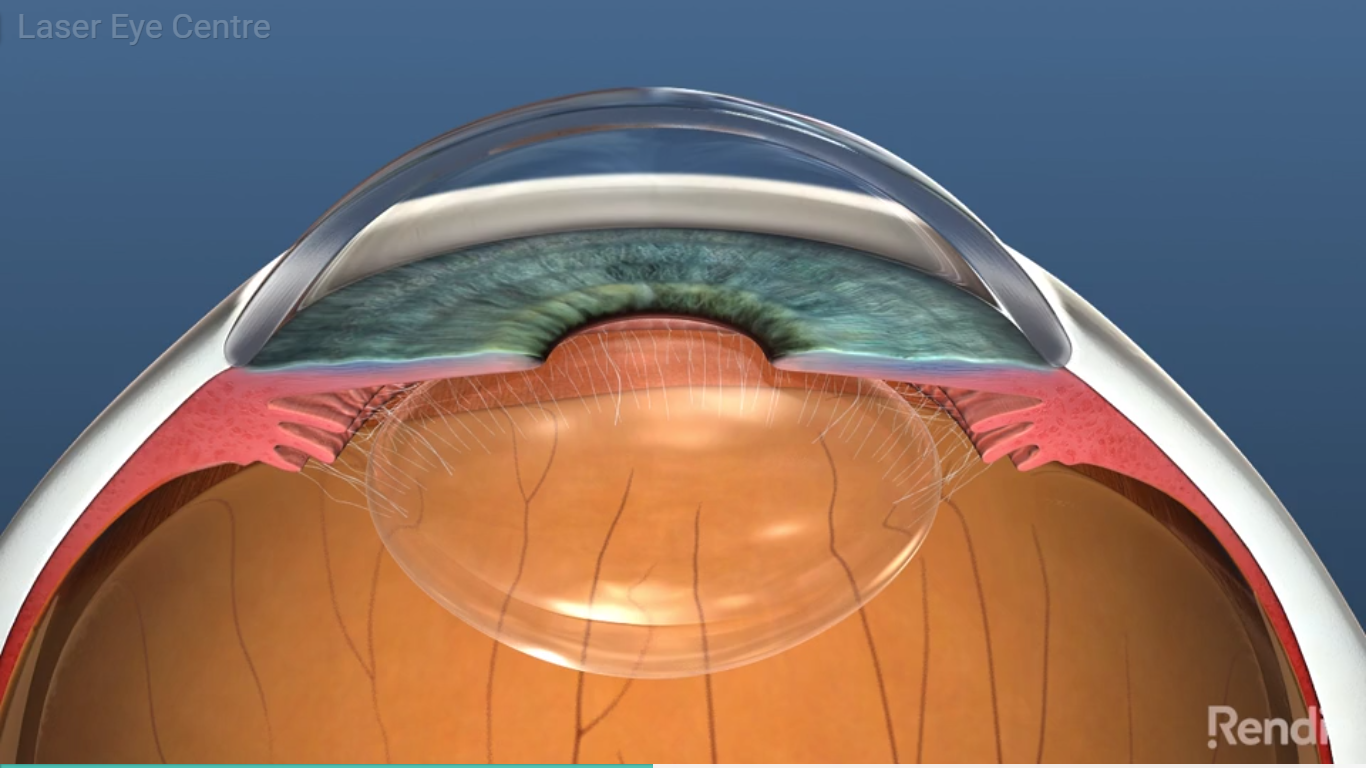The Eye
How The Eye Works
The human eye is the organ which gives us the sense of sight, which allows us to learn more about the surrounding world than any of the other senses. The eye allows us to see and interpret shapes, colours, and dimensions of objects in the world by processing the light they reflect or give off. The eye is able to see in dim light or bright light, but it cannot see an object when light is absent. The eye changes light rays into electrical signals then sends them to the brain, which interprets these electrical signals as visual images. Among the more important parts of the human eye are the iris, cornea, lens, retina, conjunctiva, the macula, and the optic nerve. These are seen in the diagram below:

The cornea is a part of the eye that helps focus light to create an image on the retina. It works in much the same way that the lens of a camera focuses light to create an image on film.
The bending and focusing of light is also known as refraction. Usually the shape of the cornea and the eye are not perfect and the image on the retina is out-of-focus (blurred) or distorted.
These imperfections in the focusing power of the eye are called refractive errors. When the cornea, lens or eye is not normal, light cannot focus accurately on the retina and the image is blurred. The eye is like a camera in the way it captures and focuses the light.
Here is a step-by-step guide of how the eye works to provide you with vision:
- Light enters the eye through the cornea, the clear, dome-shaped surface that covers the front of the eye.
- From the cornea, the light passes through the pupil. The amount of light passing through is regulated by the iris, or the colored part of your eye.
- From there, the light then hits the lens, the transparent structure inside the eye, which focuses light rays onto the retina.
Normal Vision (Emmetropia)
 Normal vision occurs when incoming light rays focus precisely on the
eye’s retina. The retina acts as a camera to the brain. Many vision
problems occur due to the shape, health or age of your eyes.
Normal vision occurs when incoming light rays focus precisely on the
eye’s retina. The retina acts as a camera to the brain. Many vision
problems occur due to the shape, health or age of your eyes.
What is 20/20 vision?
20/20 is a measurement of your distance vision. 20/20 vision is frequently described as a person being able to see detail from 20 feet away that a person with normal vision can see from 20 feet. Therefore, if a person has a 20/40 vision, this indicates that the person would have to be 20 feet away to be able to see what a person with normal vision of 20/20 could see at 40 feet.
Why do we wear glasses?
Before you understand Laser Vision Correction, the different types of visual problems which cause you to wear glasses need to be understood. These include:
Myopia

Myopia, more commonly known as shortsightedness, occurs when an eye has
too much focusing power. This means that the eyeball is either too long
or the cornea is too steep, and the projected image falls short of the
retina. The result is an improperly transmitted message to the brain or
simply, a blurred image.
Hyperopia

Hyperopia or longsightedness occurs when an eyeball is too short or the
cornea’s curvature is too flat. The image that is being focused upon
falls past the retina in this case resulting in blurred or distorted
vision.
Astigmatism

An astigmatic eye has an uneven surface — the cornea can be more curved
or steeper at one axis than at all others. This results in having more
than one focal point and, of course, blurred vision. An astigmatic eye
is shaped more like a football (toric) whereas a normal shaped eye is
more spherical, like a basketball.
Presbyopia

Presbyopia is a natural ageing process whereby we have difficulty in
near work like reading and writing. Usually it sets in from the age of
40. The lens of the eye hardens and the muscles weaken. When people who
have perfect vision all their lives become Presbyopic, they need to wear
reading glasses. People who already wear glasses for distance vision
need to wear bifocals.